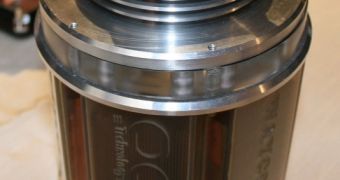Computex 2007 is over. But unlike any other computer show (perhaps excepting Cebit), Computex has a way of generating even more questions than answers. And if this phrase sounded a little too cryptic, let me make up for that by saying that a lot of new stuff is being showcased during Computex. Starting with 2000W PSUs and ending with 2000MHz capable DDR3 sticks, you can see almost every piece of hardware that will be regarded as mainstream after about a year.
But not every single hardware part that gets to be showcased at Computex manages to enter mass production. And unfortunately it's the most interesting stuff that never comes out. That's why such a show leaves a lot of questions unanswered. Let's take the case of dual Ati 2600 GPU boards. Although I love multi-GPU systems on one PCB, I doubt this particular setup will enter mass production. Dual-GPU cards were never successful in terms of revenues and judging by the specs of the 2600 series, I doubt this one will.
And then, there's OCZ Hydrojet cooler, the first carbon nanotube cooling unit in the world. The contact base of the heatsink is made completely of carbon-nanotubes, which are said to be about 5 times more efficient when compared to classical Copper. In terms of temperature dissipation, this type of material has the same properties as a superconductor (in terms of electrical transfer). The proper term here is "ballistic conductor" and refers to the fact that electrons can flow through the nanotubes without any collisions whatsoever.
Looking at the manufacturing process, Carbon nanotubes are small wire-like structures made out of graphene sheets (the base graphene is cut into very small sheets - the thickness of a sheet is one-atom thick). Depending on the needs, the dimension of the sheet can vary. Then the sheets are rolled out until they form a cylinder (which is the final form of the nanotube).
Aside from the product itself, OCZ didn't say anything about cooling capabilities, weight, cooling mechanism or CPU support. Judging by the surface of the baseplate, this cooler will probably work with LGA 775 CPUs as well as AM2 parts. No words on the cooler support and availability. I wonder if we're ever going to see such a product entering mass production. Yet another question unanswered...

 14 DAY TRIAL //
14 DAY TRIAL //